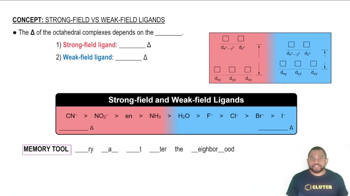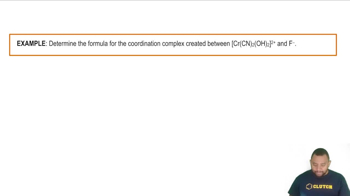Textbook Question
Carbon monoxide, CO, is an important ligand in coordination chemistry. When CO is reacted with nickel metal, the product is [Ni(CO)4] which is a toxic, pale yellow liquid.
a. What is the oxidation number for nickel in this compound?
b. Given that [Ni(CO)4] is a diamagnetic molecule with a tetrahedral geometry, what is the electron configuration of nickel in this compound?
c. Write the name for [Ni(CO)4] using the nomenclature rules for coordination compounds.




